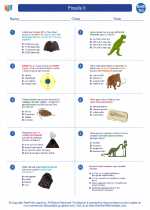Introduction to Coral Reefs
Coral reefs are diverse underwater ecosystems that are formed by the accumulation of coral skeletons over time. These reefs are found in the shallow, warm waters of the tropics and subtropics and are home to a wide variety of marine life.
Formation of Coral Reefs
Corals are tiny animals called polyps that secrete a calcium carbonate skeleton. Over time, these skeletons accumulate and form the structure of a coral reef. The relationship between coral polyps and the algae that live inside them is crucial to the formation of reefs. The algae provide the coral with essential nutrients through photosynthesis, and in return, the coral provides the algae with a protected environment.
Types of Coral Reefs
There are three main types of coral reefs: fringing reefs, barrier reefs, and atolls. Fringing reefs are the most common and are directly attached to the shore of a landmass. Barrier reefs are separated from the shore by a lagoon, and atolls are circular reefs that surround a lagoon without any land in sight.
Importance of Coral Reefs
Coral reefs are incredibly important ecosystems that provide habitat and protection for a vast array of marine life. They also play a crucial role in shoreline protection, as well as in the global carbon and nitrogen cycles. Additionally, coral reefs are major attractions for tourism and provide livelihoods for millions of people around the world.
Threats to Coral Reefs
Unfortunately, coral reefs are facing numerous threats, including climate change, ocean acidification, overfishing, and pollution. These factors are causing widespread coral bleaching and coral reef degradation, leading to a decline in reef health and biodiversity.
Study Guide for Coral Reefs
- Describe the formation of coral reefs and the role of coral polyps in reef formation.
- Explain the three main types of coral reefs and their unique characteristics.
- Discuss the ecological importance of coral reefs and their impact on marine biodiversity.
- Identify the major threats to coral reefs and their implications for reef ecosystems.
- Propose potential conservation and management strategies to protect coral reefs from further degradation.



